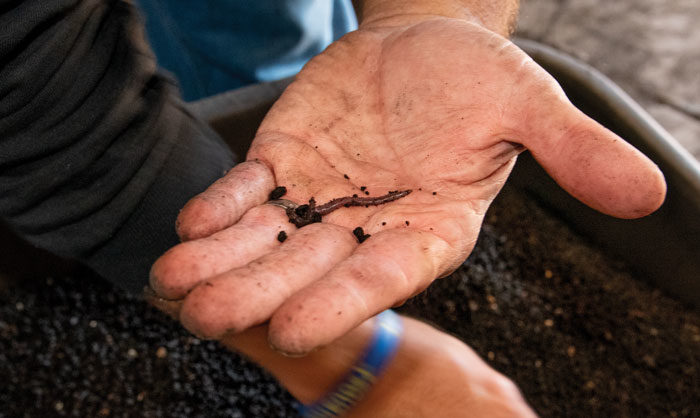No-Till Farmer
Get full access NOW to the most comprehensive, powerful and easy-to-use online resource for no-tillage practices. Just one good idea will pay for your subscription hundreds of times over.

WORKER WORM. Anthony Arbucias holds a worm from his Watertown, Wis.-based farm. Arbucias’s operation focuses on epigeic worms, which typically live at the soil surface and are adept at breaking down organic matter. Photo: Brian O’Connor
Anthony Arbucias is proud of his worms.
The co-owner of Lush Farms in Watertown, Wis., uses them to produce a million pounds of worm castings per year. While most castings are sold by the truckload to soil blenders and then repackaged to smaller bags for small gardeners, some have been sold to no-tillers looking to boost fertility, retain water and improve soil structure in problem land areas.
He’s hoping to expand production to 2-2.75 million pounds of worm castings in 2023 and refurbish the former hobby farm where the worms reside.
“We call this the worm room,” Arbucias says, standing in one half of a barn converted to manage the thousands of worms. Large bins line shelves on either side of a central walkway. Each bin contains worm bedding/feed and over 6,000 worms. The lights in the room are kept on 24 hours per day, and the temperature is 72-78 degrees F year-round. The bins contain what looks like pitch-black dirt, and occasionally a worm glides to the surface, visible for a second before sliding back into the bedding.
The number of earthworms in no-till fields is the best indicator of soil life. Ray Weil, a University of Maryland researcher, once estimated high-quality soils no-tilled for more than 20 years likely contain 2,000 pounds of earthworms. Those worms would produce 100 tons of castings — the equivalent of spreading two-thirds of an inch of manure on the surface.
The castings produced by the worms contain microbes from the…